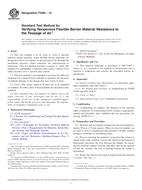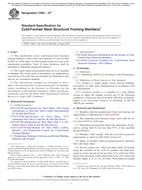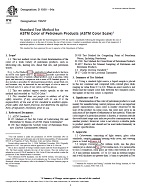1.1 This practice covers and provides guidance for the material recovery of scrap tires for their fuel value. The conversion of a whole scrap tire into a chipped formed for use as a fuel produces a product called tire-derived fuel (TDF). This recovery practice has moved from a pioneering concept in the early 1980s to a proven and continuous use in the United States with industrial and utility applications.
1.2 Combustion units engineered to use solid fuels, such as coal or wood or both, are fairly numerous throughout the U.S. Many of these units are now using TDF even though they were not specifically designed to burn TDF. It is clear that TDF has combustion characteristics similar to other carbon-based solid fuels. Similarities led to pragmatic testing in existing combustion units. Successful testing led to subsequent acceptance of TDF as a supplemental fuel when blended with conventional fuels in existing combustion devices. Changes required to modify appropriate existing combustion units to accommodate TDF range from none to relatively minor. The issues of proper applications and specifications are critical to successful utilization of this alternative energy resource.
1.3 This practice explains TDF’s use when blended and combusted under normal operating conditions with originally specified fuels. Whole tire combustion for energy recovery is not discussed herein since whole tire usage does not require tire processing to a defined fuel specification.
1.4 This standard does not purport to address all of the safety concerns, if any, associated with its use. It is the responsibility of the user of this standard to establish appropriate safety and health practices and determine the applicability of regulatory limitations prior to use.
Product Details
- Published:
- 08/10/2001
- Number of Pages:
- 9
- File Size:
- 1 file , 160 KB


